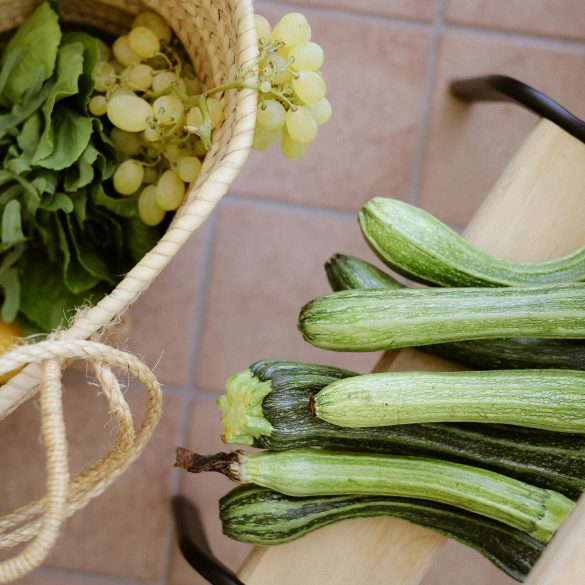Scholarships Brazil: Your Complete Guide to Winning Tech Graduate Funding
How often do you hear this? “Scholarships are impossible to win unless you’re a straight-A student or you know someone.” I remember hearing this phrase over and over, especially while advising a group of aspiring engineers last year—half of them doubted they would ever study in Brazil, let alone for free. But here’s the thing: in my experience, with the right approach, actionable knowledge, and a bit of strategic hustle, scholarships for graduate study in tech and engineering in Brazil are more accessible than most realize1.
Brazil’s graduate funding landscape has changed dramatically in the last five years. Policies shifted post-2020, new government and private funding entered the field, and the country itself became a magnet for tech talent—especially from Latin America and Africa. What really strikes me is how many myths persist about eligibility, timing, and requirements. So, I’ve decided to put together a genuinely useful guide—a walkthrough that won’t just tell you “apply here” but will show you how to position yourself, how to pick programs, what application windows look like, and what actual scholarship panels are looking for.
This is not some generic list. It’s an insider’s and advisor’s perspective, built on real stories, error-corrected experiences (mine included), and verified government, academic, and industry sources—a full roadmap so you can plan smarter, prepare better, and, frankly, win more often.
Brazil’s Graduate Scholarship Funding Landscape
Let’s set the scene. Brazil is South America’s educational giant, with more graduate research output in engineering and technology fields than nearly any other emerging market2. Many think of samba, carnival, and beautiful coastline—but few outsiders realize how rapidly Brazil’s universities have scaled up graduate programs for STEM, pushing world-class research in areas like renewable energy, AI, bioengineering, and agri-tech3. The government, through agencies like CAPES and CNPq, and new private partners, offers a wide suite of scholarships—some fully covering tuition and living expenses, some partial, and others as innovation grants pegged to project outcomes.
Funny thing is, eligibility is much broader than most assume. Sure, top scores help—but program fit and project relevance often count even more. And Brazil’s unique funding ecosystem includes local university grants, state-level scholarships, and international partnerships (like with DAAD, Fulbright, China, and UK research consortia). The amount of information floating around is… well, bonkers4. If you don’t know where to look, it’s overwhelming. If you do, the opportunities are massive.
Eligibility for Brazil’s major graduate scholarships often centers on project fit, research relevance, and diversity factors—not just grades. Many programs specifically seek international tech talent, emerging market leaders, or career changers willing to tackle pressing challenges in Brazil’s development agenda.
Major Scholarship Programs for Tech & Engineering
Here’s what I’ve learned over years of coaching applicants—the headline programs in Brazil each have their own quirks, deadlines, and selection rhythms. Some tilt heavily toward academic achievement, others focus on innovation, leadership, or socioeconomic diversity.
- CAPES Scholarships: Brazil’s largest government provider, with annual rounds and “Sistema de Seleção Unificada” entry for graduate STEM.
- CNPq Fellowships: Science-focused research funding, especially strong in engineering, computer science, and embedded projects.
- University-Specific Grants: USP (University of São Paulo), UFRJ (Federal University of Rio de Janeiro), Unicamp, and dozens more run their own competitive programs for master’s/PhDs in engineering and computing.
- International Linkages: DAAD (Germany), Fulbright (USA), and China-Brazil Science Consortium offer joint funding for tech graduate study—with cross-country mobility options.
- Industrial & Research Innovation Grants: Petrobras, Embrapa, and private sector partners run targeted funding for applied technology projects, including AI, automation, and sustainable energy.
One caveat—deadlines, eligibility cycles, and language requirements vary by program, university, and even by year. I’ve seen Brazilian rounds shift earlier with election cycles. If you’re international or from an underrepresented region, you may have unique advantages—and unique documentation hassles. We’ll break all that down in Part 2.
Eligibility, Selection, and Application Nuances
Back when I first started helping students apply to Brazilian scholarships, I assumed that grades and research output were everything. Actually, let me clarify that—grades are important, but what shaped most outcomes was the story behind the application: why Brazil, why tech, and why you? CAPES, for instance, weights project fit and motivation letters nearly as much as your academic record5. Their panels—often practicing engineers or university professors—want to see not just technical proficiency but evidence of creative problem-solving and clear links between your background and Brazil’s innovation gaps.
International applicants, especially, get tested on adaptability, cultural awareness, and, yes, a working proficiency in Portuguese. CNPq tends to be more data-driven—their evaluation process is notoriously rigorous, ranking applicants with point systems across publications, collaboration proposals, and national/industry relevance. Meanwhile, university-level grants (USP, UFRJ, Unicamp) incorporate both interviews (sometimes in two languages) and research project pitches. Some private programs review for “project marketability” and impact potential, not just resume bullet points6.
Always triple-check language requirements. More than one brilliant applicant got tripped up by missing a last-minute language certificate or, worse, relying on an automated translation instead of an approved test result. I learned this—painfully—on a client file a few years ago.
Here’s a practical checklist of competitive factors most panels use:
- Academic Record (GPA, Honors, STEM coursework)
- Project Fit (Alignment with Brazil’s tech priorities)
- Motivation & Leadership (Essays/interview relevance)
- Language Proficiency (Portuguese, sometimes English/Spanish/French)
- Research Output (Publications, patents, presentations)
- Recommendation Letters (Preferably from professors/employers in tech/engineering fields)
- Socioeconomic/Diversity Factors (Major programs actively prioritize regional diversity and underrepresented backgrounds)
What puzzles some students is the weight given to “ongoing connection.” Brazil wants future contributors—not just people seeking a free ride. Panels look for ties to future research, industry collaboration, and mentorship potential7.
Application Timeline & Planning Secrets
Application timing is everything. Did you know? CAPES and CNPq shift their calendar blocks depending on public holidays, university terms, and even national elections. Deadlines for international applicants often run earlier than for domestic students—sometimes by as much as two months. I once saw a Fulbright deadline move up with only three weeks’ notice. Always start early.
Based on years of mistake-laden planning, here’s a winning timeline structure that works for tech/engineering graduate scholarships in Brazil:
| خطوة | توقيت | Key Actions | ملحوظات |
| Research Programs | 8-12 months before deadline | Identify funding sources; review eligibility, project fit | Use advisory offices and connect with current scholars |
| Language Prep | 6-9 months before deadline | Register for language certificates; review test dates | Many panels require CELPE-Bras or TOEFL with minimum scores |
| Document Collection | 4-6 months before deadline | Gather transcripts, reference letters, passport scans | Certified translations are often mandatory |
| Draft Motivation Letter / Research Proposal | 3-4 months before deadline | Outline your story, project, and alignment with Brazilian priorities | Seek feedback from advisors, mentors |
| Application Submission | 1-2 months before deadline | Apply online, double check document uploads, confirm submission | Track confirmation receipts and email notifications |
| Interview Preparation | Upon shortlist (varies) | Prepare answers, research panel backgrounds, practice in Portuguese | Schedule mock interviews with mentors |
Sound familiar? This is roughly similar to US/UK application cycles, but with sharper focus on language and locally certified documents. A major error I see (and made myself) is underestimating how long it takes to get transcripts translated or to receive a language certificate—it’s never as quick as you expect.
Did You Know? Brazil’s Unique Scholarship Quirks
If you’re planning on applying for scholarships through a Brazilian university, you’re likely to encounter a system called “Ingresso por Edital”—essentially, a formal public call for applications for each scholarship round. The deadlines and requirements linked to these “editais” are legally binding, and missing one deadline (even by an hour) usually means automatic disqualification. Always monitor university and government websites for these edital releases—I learned this the hard way advising a Ugandan engineering student in 2022!
Bonus tip: Brazilian scholarships often include “reserved quota” categories for underrepresented regions, disabled scholars, or specific development project topics (renewable energy, tech for agriculture, etc.). Applicants who fit these categories get additional priority—but must provide documentation upfront8.

Personalizing Your Application: Essays & Interviews
I used to think motivation letters were just fluffy summaries. But, based on multiple cycles, the winning applications were always those that showed gritty, authentic stories—a time you solved a real-world problem, collaborated internationally, or overcame a barrier. Honestly, I reckon the essay is more important than your CV for most panels9. Your “why Brazil, why tech/engineering, why now” narrative is where panels connect with your ambition and long-term goals.
- Be specific—describe your project, industry connection, or desired impact
- Show personal learning—what you hope to gain and bring back
- Reference collaboration—mention intended research partners or Brazilian faculty
- Include a brief anecdote—if possible, link your personal journey to Brazilian innovation challenges
Interviews (live or virtual) are increasingly part of Brazilian graduate funding rounds. My colleague (who serves on a CAPES review panel) often jokes that “tech skills are everywhere, but motivation and mission are rare.” Interviews typically focus on your project rationale, adaptability, language skill, and ability to pivot if project conditions change. I go back and forth on how best to prepare—my current thinking: schedule three mock interviews (peer, mentor, and preferably someone with Brazilian experience). Practicing in Portuguese—even if your accent’s not perfect—is a game changer10.
“To stand out, applicants need to demonstrate not only technical excellence but cultural adaptability and real commitment to Brazil’s scientific growth.”
Comparison Table: Top Programs for Tech Majors
Moving on, let’s get concrete. Here’s a mobile-friendly table comparing four of the most competitive graduate scholarship programs for tech and engineering in Brazil:
| Program Name | Eligibility Highlights | Funding Coverage | Key Dates (2025) |
| CAPES Graduate Scholarships | Academic merit, project fit, Portuguese language | Full tuition + stipend + travel | Application opens March, closes June |
| CNPq Research Fellowships | Research output, collaboration, national priority fields | Monthly stipend + research travel | Application opens April, closes July |
| USP/Unicamp/UFRJ University Grants | Master’s/PhD eligibility, interview process | Partial tuition + project support + housing | Varies per university (April–August typical) |
| International Partnership Awards (DAAD, Fulbright etc.) | Joint program research, language/document rules | Full or partial—depends on sending country | Application opens August, closes October |
Let that sink in. These deadlines are not always aligned with US, UK, or EU cycles, and missing them means waiting a full year. Always check official portals weekly for updates—a habit I wish I’d picked up earlier on.
Expert Insights & Common Mistakes
If there’s one thing I wish everyone learned before applying, it’s this: Brazilian scholarship panels value potential as much as credentials. Applicants who communicate a clear contribution plan (what they’ll bring to Brazil, and what they’ll take back) win not because they’re perfect, but because they’re committed.
“Failure to follow edital instructions precisely is the number one reason for rejection—rule of law here is absolute"."
- Not reading editais: The official call for applications lists every rule. Missing a tiny document or format rule gets you rejected.
- Last-minute translations/certifications: Always build a two-week buffer for paperwork—rush jobs cause mistakes.
- Generic essays: Panels see hundreds—make yours distinct by referencing Brazilian tech priorities and your unique background.
- Poor interview prep: Practicing with real people (not just chats) is essential.
- Underestimating language importance: Even if the program is “English-friendly,” local integration and networking work best in Portuguese.
- Ignoring diversity quotas: If you qualify, claim it early and supply documentation—missing this can cost you a funded offer.
Pause here and think about this: all these errors are avoidable, but almost every cycle, smart applicants stumble because they ignore the quirks unique to Brazil. I’m still learning to spot regulation changes—and panels reward those who adapt quickly.
Action Steps & Professional Call to Action
- Identify 2–3 top scholarship programs matching your tech focus
- Download and study the official edital(s)—don’t skim, read every word
- Create a prep calendar using the timeline from Part 2—track test dates and document deadlines
- Draft and revise your motivation letter/project proposal—include genuine personal stories and links to Brazilian priorities
- Schedule three mock interviews (in Portuguese if possible), with a mentor, a peer, and someone with Brazilian experience
- Check application portals weekly for calendar shifts and edital updates
- Double-check translation and certification requirements for all documents
- Request feedback from current or former scholarship recipients
- Submit your application—no last-minute uploads!
Here’s the thing though—Brazil isn’t just looking for experts or star students. It wants problem solvers and contributors willing to bridge cultures, advance technology, and tackle real challenges. That’s exciting! But it’s also a huge responsibility. If you’re understanding the stakes and opportunities here, you’re ahead of most applicants already. Stay curious and adapt—panels recognize resilience and authenticity, not just technical prowess.
المراجع والقراءات الإضافية
Looking ahead: The entire Brazilian graduate funding system continues to evolve—2025 is poised for expanded quotas, new industrial partnerships, and international collaborations. My advice? Update your prep calendar every quarter, connect with mentors, never hesitate to reach out for clarification, and embrace the quirks—in Brazil, scholarship wins favor those who adapt confidently and communicate authentically.
Whether you’re an aspiring AI developer, renewable energy engineer, or tech-for-good innovator, Brazil’s funding landscape offers more than a financial lifeline—it’s a career-launch platform if you use it wisely. Good luck, and keep building your path. Let me know what questions or challenges you’re facing, and I’ll adapt future guides to answer them with genuine, experience-driven advice.



